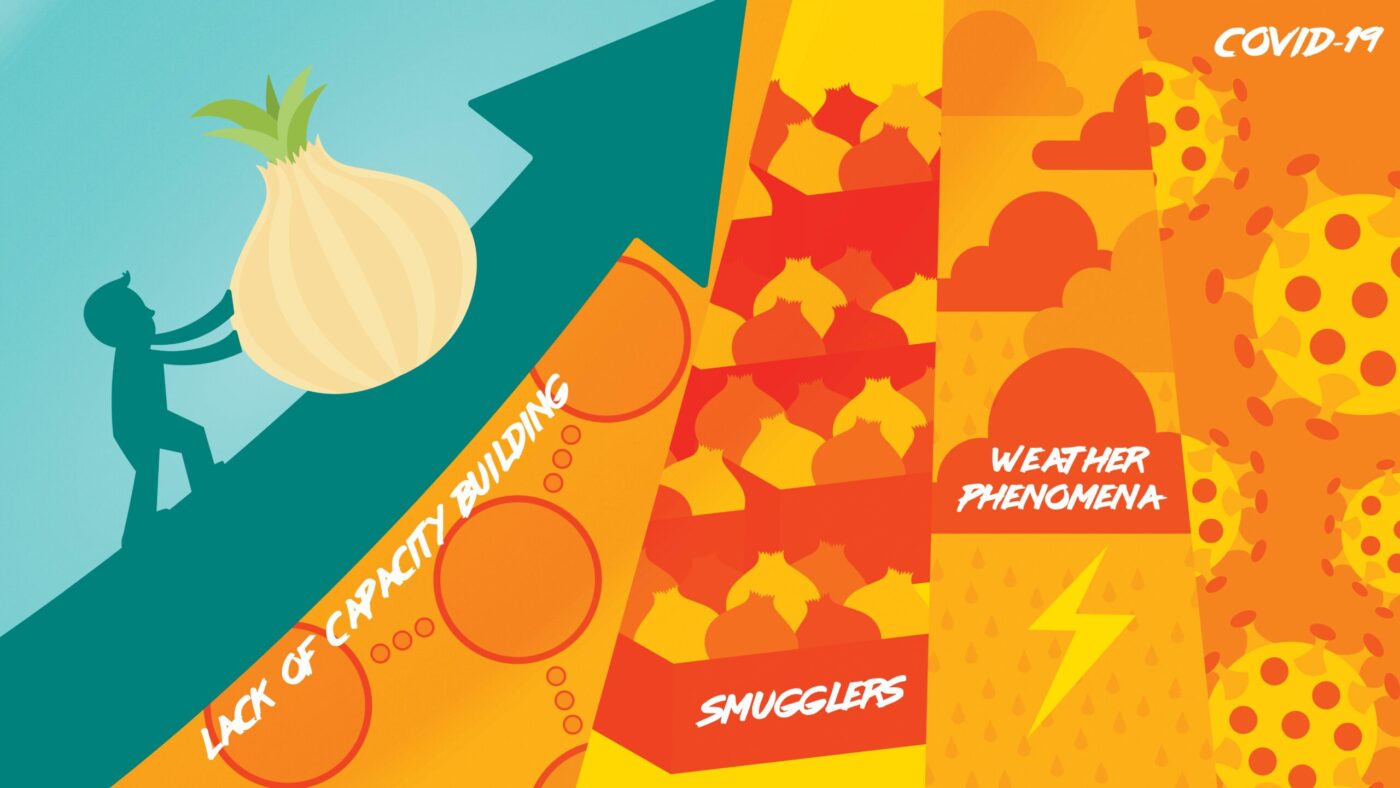THE PRICE of onions has reached an all-time high, with the cost of one kilogram skyrocketing to Php 700. The recent shortage in the country is a result of varying factors, such as weather, import restrictions, and the economic effects of the pandemic, among others.
However, the rising onion prices are but a symptom of the country’s faltering agricultural sector with many industries failing to meet local production quotas—unveiling the need for more long-term economic solutions.
Layered issues
Testament to the sector’s multilayered issues, the Philippines’ agricultural industry has suffered uncountable natural disasters, accruing billions in losses. Consequently, such erratic weather conditions led to a decrease in different types of produce, including onions.
As early as August 2022, the Department of Agriculture said that onion production would not meet market demand. Calls were made to import onions and cushion supply but the Marcos administration held close to import restrictions.
While climate conditions may be the simplest suspect for the price hike, it is not the sole cause for inflated onion prices. External forces, including cartels, hoarding, and price manipulation, have also permeated markets. For one, the Philippines has experienced more onion smuggling across regions, with the Bureau of Customs seizing over Php 153.6-million worth of onions earlier this year. Officials now blame cartels for sky-high prices caused by artificial demand.
Another contributing factor is the COVID-19 pandemic, which forced about 73% of smaller merchants to close shop. Ateneo De Manila University Economics Department former Chair Leonardo A. Lanzona, PhD contended that this crisis pushed bigger merchants to manipulate prices and create market inequities.
“Apparently, some merchants have some market control, meaning they could impact [and] manipulate the prices. I think that would be the more reasonable explanation,” Lanzona shared.
Over the past year, onions have been just one staple that spiked in price. Other kitchen essentials are also affected by the farming sector’s current dire state, leaving Filipino households to swallow steep prices.
Unearthing roots
Mirroring the onion crisis, basics such as sugar and salt are among the items facing shortages and inflated prices.
Sugar supplies suffered from delayed imports during the annual sugar scarcity period. Meanwhile, salt shortages were exacerbated by the local supply’s inability to meet demand despite geographical advantages in salt production. As these issues unfolded, import barriers such as sanitary restrictions and the tight window for permit applications share responsibility for higher costs.
In response to such inflation, the government proposed importing thousands of metric tons of onions, sugar, and salt. This intended to calm prices, albeit temporarily. However, this ultimately risks harming farmers, as incoming imports lower prices while failing to target the root causes, namely the disappearing small retailers, and the costly produce delivery process. In the end, this solution leaves farmers to endure losses as their yields are left untouched on shelves.
Pointing to the struggle of farmers to deliver produce to urban markets, Lanzona says that capacity-building—ranging from technological capital, skills training, to entrepreneurial literacy—is vital. Over the years, Filipino farmers have struggled as different sectors grew weaker, needing more competitive advantage. In addition, the country’s agricultural landscape continues to see a lack of capital, subpar productivity, low diversification, and high production costs.
“[The problem is] not the lack of production. It is more the lack of capacity for local farmers to deliver [to the market]… and the ability to create more competition—empowering the smaller producers,” Lanzona said.
While short-term efforts to ease inflation are being made, the number of struggling farmers and unstable prices suggest that sustainable solutions must be found to address the sector’s woes.
Cultivating industries
The struggles in agriculture reveal the larger need for more sustainable solutions that support long-term growth.To address the need for capacity-building, support mechanisms must focus on improving productivity and trade activities for smallholder farmers. Lanzona asserts, “We need to set up a productivity program intended to help poorer sectors. It’s crucial for the government [to provide] enough resources to farmers so that they can start competing.”
Such support includes incentivizing agricultural investments—technological, infrastructural, and technical. Likewise, central to selling local produce is the support for farm-to-market road (FMR) network plans. These FMRs could improve distribution channels and develop local competition. Coupled with long-term productivity plans vis-a-vis improved inputs and outputs, these investments would boost the Philippine value chain and open up pathways for market competition. By unearthing root issues, planting seeds for industry growth, and cultivating fairer prices, the interests of farmers and consumers might be achieved.




